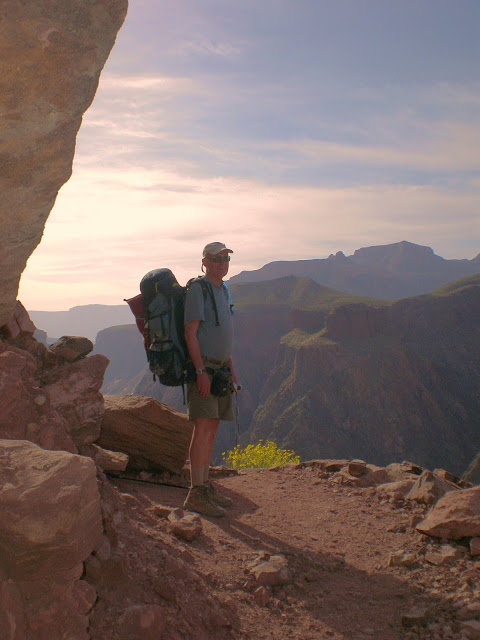 |
| One of the many captivating views of the Wave. |
Awhile back, I had the wonderful opportunity to hike to the Wave. I had heard much about the Wave, but was somewhat skeptical of it's splendor. My travels have shown me that all of Southern Utah's Canyon Country is amazing. Well, the Wave's fanfare is definitely deserving. It is absolutely breath taking, better than I could have imagined.
 |
| Navigating this Slick Rock Jungle |
With boots on the ground, the Wave is not that easy to find. There is no trail. Reaching the Wave requires overland hiking across slickrock Navajo Sandstone and loose dunes. We did found a few cairns and a couple Carsonite signs that vaguely confirmed that we were on the right route. However, many lucky permit holders never find their way to the Wave,,, and some don't find their way back.
 |
| View looking toward the Paria River slot canyon |
What helped me out the most was preparation. I studied the Trails Illustrated maps, in order to remember the major landmarks. Also, there are some really good hiking blogs that can offer some good visual cues.
 |
| The Notch is visible in the top of the pale dome, as a dark vertical crack |
The most prominent visual cue would be "the Notch". The Notch is a vertical crack in a giant dome of Navajo Sandstone. You can see it from quite a distance away. Once you locate the Notch, walk towards it. The Wave lies at the foot of the Notch. |
| The wild flowers were incredible. These Penstemons were everywhere! |
It is easy to get lost in this part of the world. Bring plenty of water and food.
Oh, and pack a jacket and flashlight, because you never know what the day will bring.
 |
| For some reason, these twin buttes caught our interest |
Another really valuable tip is PROTECT YOUR CAMERA. This is a veeeerrry sandy place. These little grains of silica and quartz will get into every nook and cranny. My camera jammed soon after reaching the Wave. Be especially vigilant if the wind is kicking up.
 |
| Study the many textures of the Wave. |
This post is sponsored by Canyon Coffee
Our featured product is
made right here in beautiful Flagstaff Arizona
- While this insulating sleeve was specifically designed for the Press-Bot Coffee Press. It also works great for keeping beverages cold
- The ballistic shell of the Canyon Coozy is made of super high-grade Cordura, suited for decades of durability
- Closed-cell foam provides an impenetrable thermal barrier between hand and beverage
- Bar tacked or extreme strength. The 1" webbing, on the hand-grip and 'biner loop, could save your life
- Great for hiking, running, river rafting, camping, all-around RAD lifestyle!
go to http://canyoncoffee.us










































